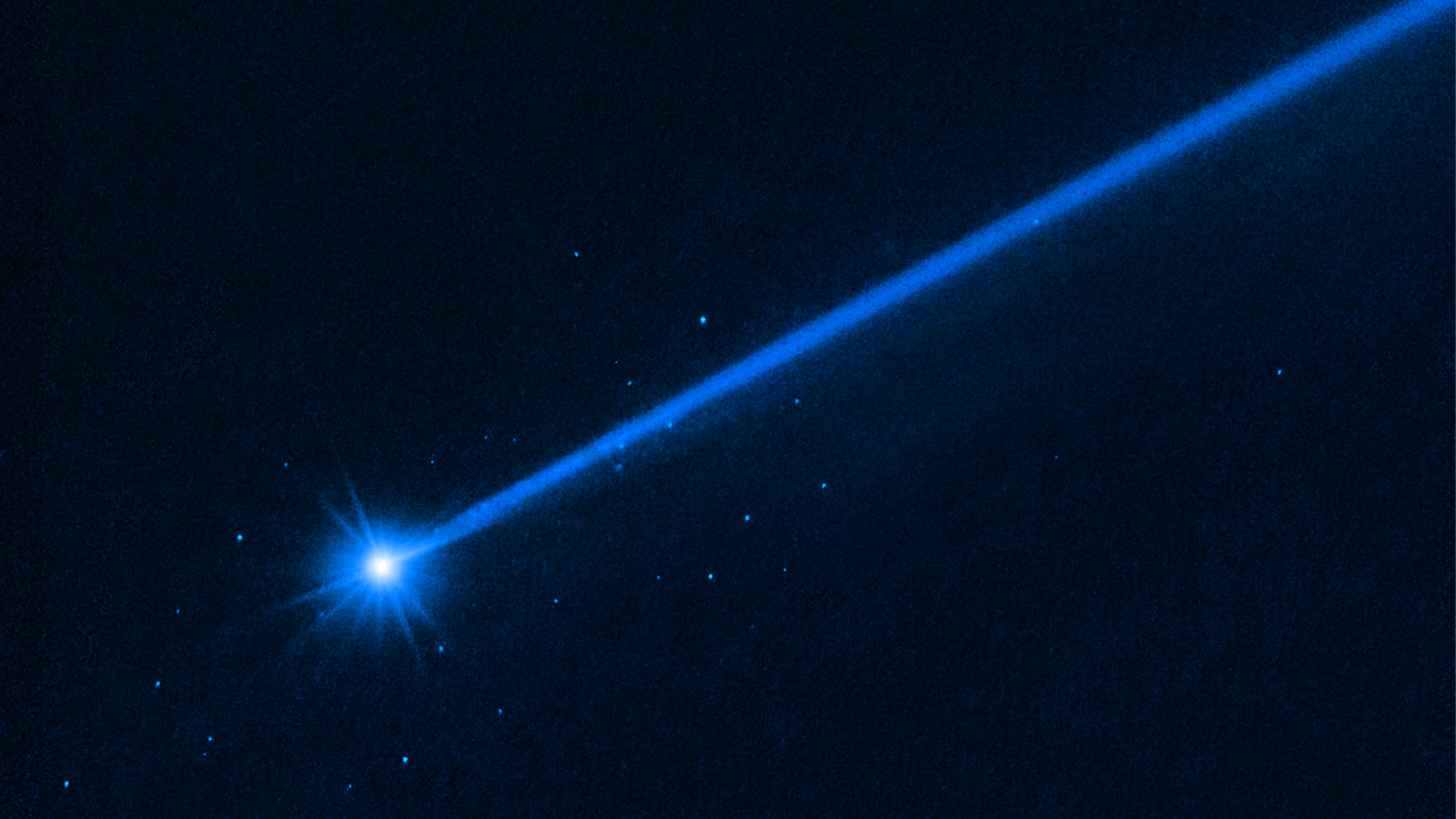

The three-decade old Hubble Space Telescope has spotted a swarm of space boulders around the asteroid Dimorphos. If that name sounds familiar, it is the same asteroid that NASA deliberately slammed the 1,200 pound DART spacecraft into in September 2022.
[Related: NASA’s first attempt to smack an asteroid was picture perfect.]
The mission was the first time humans set out to change the movement of an object in space. The Double Asteroid Redirection Test (DART) spacecraft slammed head-on into Dimorphos at 13,000 miles per hour on September 26, 2022 in an effort to change the asteroid’s velocity. The smashing results demonstrated how this kind of kinetic impact technology could be used to deflect asteroids heading towards the Earth. Dimorphos and the larger asteroid that it orbits, named Didymos, do not pose a known threat to Earth.
The 37 free-flung boulders that Hubble has detected range in size from three 22 feet across. They are slowly drifting away from Dimorphos at slightly over half-mile per hour. The total mass in these detected boulders is about 0.1 percent the mass of Dimorphos.
“This is a spectacular observation–much better than I expected. We see a cloud of boulders carrying mass and energy away from the impact target. The numbers, sizes, and shapes of the boulders are consistent with them having been knocked off the surface of Dimorphos by the impact,” said University of California at Los Angeles planetary scientist David Jewitt said in a statement. “This tells us for the first time what happens when you hit an asteroid and see material coming out up to the largest sizes. The boulders are some of the faintest things ever imaged inside our solar system.”
According to Jewitt, this finding opens up a new dimension for studying the aftermath of the DART experiment when the European Space Agency’s Hera spacecraft arrives at the binary asteroid in late 2026. Hera is scheduled to perform a detailed post-impact survey.

The boulder cloud is also expanding and dispersing, and is expected to spread along Dimorphos and Didymos’ surface. NASA believes that the boulders are likely not shattered pieces of the asteroid caused by the impact. These pieces were already scattered across Dimorphos’ surface, based on the final close-up image that DART spacecraft took only two seconds before the collision.
Jewitt estimates that the impact from DART shook off two percent of the boulders on the Dimorphos’ surface, and that the boulder observations made by Hubble also give an estimate for the size of the DART impact crater.
“The boulders could have been excavated from a circle of about 160 feet across (the width of a football field) on the surface of Dimorphos,” he said. When Hera arrives in three years and five months, it will determine the actual crater size
[Related: Why scientists are studying the clouds of debris left in DART’s wake.]
It’s not fully clear how the boulders were lifted off Dimorphos’ surface, but they could have been part of an ejecta plume that Hubble and other observatories have photographed. It’s also possible that a seismic wave from the impact with DART may have rattled through the asteroid and shook it loose.
“If we follow the boulders in future Hubble observations, then we may have enough data to pin down the boulders’ precise trajectories. And then we’ll see in which directions they were launched from the surface,” said Jewitt.
Asteroids present a real collision hazard to Earth, such as the one that caused the mass extinction event 65 million years ago that wiped out the dinosaurs. Protecting the Earth from asteroids is also front of mind to respondents of a poll on Americans views on space exploration from Pew Research released on July 20. Sixty percent of respondents said that monitoring asteroids should be NASA’s top priority going forward, compared with only 12 percent who said that going to the moon again should be front and center.
